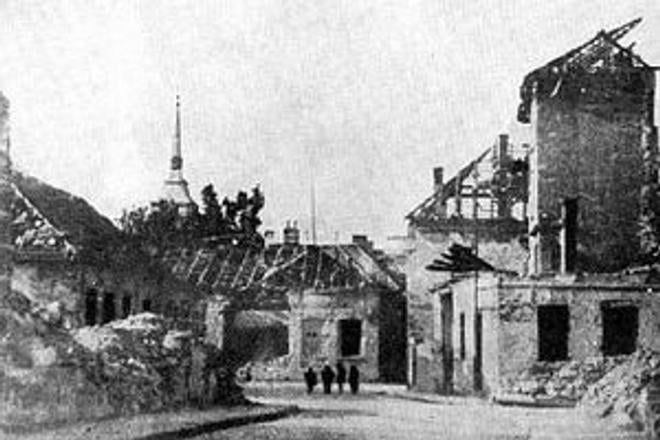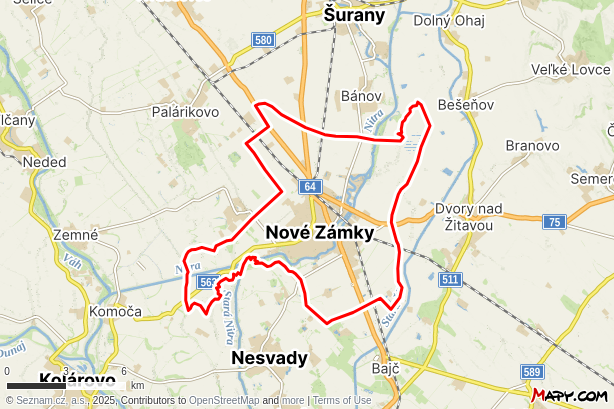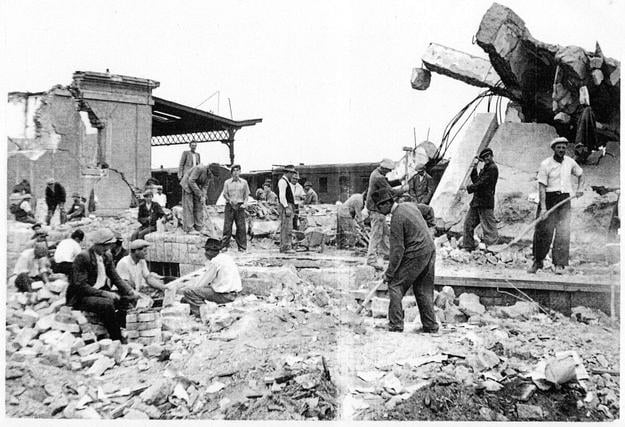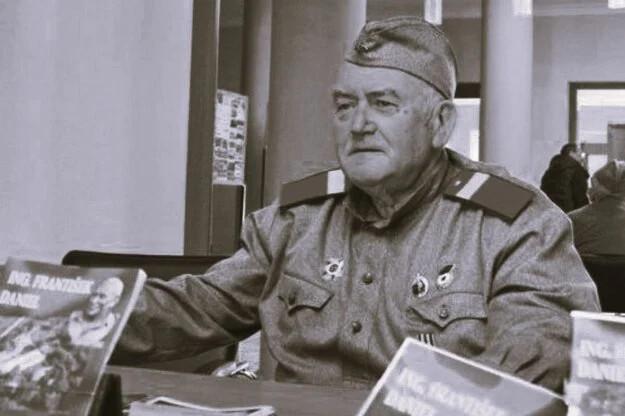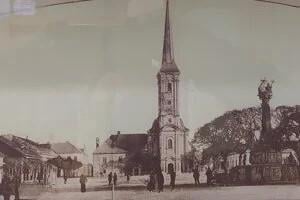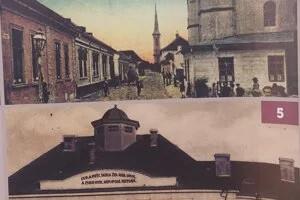Once the fourth-largest town in Slovakia with a population of 23,400 before World War II, Nové Zámky saw its population decline to 13,400 due to three devastating bombings in 1944, deportations, and the extermination of the Jewish community. To this day, Nové Zámky, at the time part of Hungary, is still referred to as the most bombed Slovak city, which became a target of Allied air raids because of its strategically important railway station.
On Friday, 14 March, the town commemorated 80 years since the most devastating bombing.
Three bombings, thousands of casualties
The first air raid struck on 7 October 1944, lasting 37 minutes. A total of 164 aircraft dropped 359 tonnes of bombs, killing 2,000 people, including civilians, soldiers, and Russian prisoners of war. The second bombing, on 14 October, claimed another 400 lives.
The most destructive raid occurred on 14 March 1945. It lasted 65 minutes, killing 1,600 people and levelling much of the town.
“One of the bombs landed right in our garden, and the earth from the crater buried our bunker. It took rescuers four hours to find us and dig us out, barely alive,” recalled one of the survivors František Daniel, who was just four years old at the time and survived being buried under the rubble.
Over time, he began to study documents related to the bombing.
Years later, he obtained an image from the archives of the 15th U.S. Army, taken from an altitude of 3.5 kilometres. When he zoomed in, he found his own house, the bomb crater, and the shelter where he had hidden during the bombing.
"It was essentially my grave because I had been buried alive for four hours. It was strange to look at a picture of myself buried beneath cubic metres of earth," he described in 2019, recalling the unsettling experience.
Around 400 people lost their lives in the vicinity of the railway station and the surrounding residential district. In addition, several streets were hit, including G. Bethlen Street, Cyrilometodská Street, T. G. Masaryk Street, and SNP Street.
"In 1944, these streets were known as Naszvadi, Bethlen Gábor, Horthy Miklós, and Szt. Anna út," revealed Daniel.
Destroyed town and childhood
The RDX bombs were filled with hexogen, so the bombs penetrated the roof and exploded inside the buildings.
This ranks Nové Zámky among the European cities most affected by the fighting during World War II. They had to be largely rebuilt after the war.
Of the 3,394 residential buildings, 2,023 were destroyed, leaving 5,800 people homeless. Many historic landmarks, including the town hall, the archbishop’s palace, the Zlatý lev hotel, and the synagogue, were reduced to ruins. “The archbishop’s palace, the town hall, the Zlatý lev hotel, the Neolog synagogue, and the Neolog Jewish school were all damaged,” stated historian Pavol Rusnák.
Lívia Hoffmanová, who worked at the regional court, survived two of the bombings but never forgot the third: "There was a large room in the cellar. Benches lined the sides, and a table stood in the middle. During the air raid, two boys, aged six or seven, were playing at the table," she recalled 11 years ago.
"One bomb shook the entire building, everything was falling, and we ran wherever we could. When we returned, we weren’t allowed back inside. A bomb had landed directly in the cellar on that table and killed both boys."
The war bombings heavily damaged the centre of Nové Zámky, with key landmarks like the archbishop’s palace, town hall, and Neolog synagogue being hit. Historian Pavol Rusnák explained that the town faced severe demographic losses from 1938 to 1946, as Czechs and Hungarians were forced to leave, and Jews were deported. To honour the victims, a memorial cross was placed at St. Joseph’s cemetery in 2011, and a ten-meter-high monument in the shape of twisted railway tracks was erected in front of the station.


